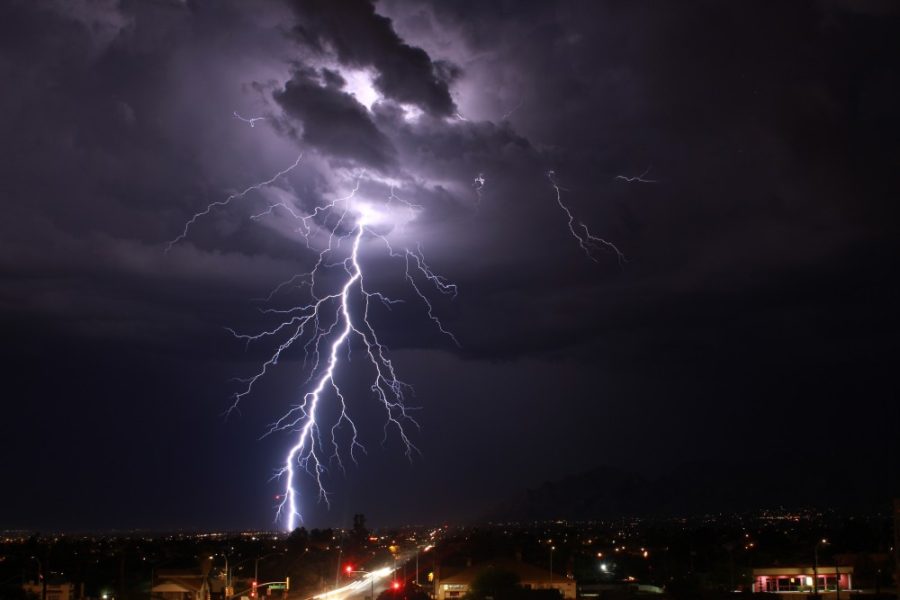Coming to Tucson as an incoming University of Arizona freshman or transfer student means it is safe to say you will most likely not have to deal with your homework getting sucked up by a tornado, your dorm collapsing from a magnitude 8 earthquake or your Uber getting swept away by a tsunami on its way to pick you up.
Aside from excessive heat, Arizonans are typically pretty secure when it comes to natural hazards, but this does not mean safety precautions in the presence of the monsoon season can be ignored.
The Arizona monsoon season typically occurs from July to September when wind patterns change causing greater levels of moisture and more intense rain and thunderstorms. According to the Arizona State University School of Geographical Sciences & Urban Planning, the monsoon is caused by incoming streams of moist air originating south of Arizona, typically from the Pacific Ocean as well as the Gulf of Mexico.
In Arizona, the monsoon is certainly a good thing. The Arizona wildlife, people, plants and economy are all highly reliant on this influx of precipitation. Farmers rely on moisture and precipitation for crops, Arizonans rely on the monsoon for the restocking of precious water resources that tend to be scarce in the region and many animals have adapted to thrive during times of the monsoon season.
“All animals have evolved to be active in certain windows,” Carl Olson, an associate curator for the UA entomology department, explained to High Country News. He also described that the humidity makes excessively hot temperatures in Arizona easier to survive under.
RELATED: Wildfire season surges in southern and central Arizona
The monsoon season may become more and more valuable as climate change continues to take a toll on Arizona, depleting water resources and drying out plants. Despite the many benefits of the monsoon season, it is also a time where Tucson residents should stay cautious.
One of the major dangers of monsoon season is flash flooding. In Tucson, there are quite a few areas prone to flash flooding. Some include washes, canyons, low desert areas and even residential and commercial areas.
With the recent wildfires in Southern Arizona, it is quite possible there will be extreme flash flooding during this monsoon season. As the fires continue to burn through vegetation and weaken the soil in high places, the velocity and power of flooding can increase significantly.
According to Ann Youberg, a senior research scientist at the UA specializing in post-wildfire debris-flows, wildfires can cause more water to reach the ground and less water to infiltrate the ground, causing larger, more intense flash floods.
“When you get a high-intensity fire that burns off all the vegetation, you reduce your interception, so more rainwater hits the ground,” Youberg said. “The other thing is, the fire changes the soil such that infiltration is reduced, so the water that normally would’ve gone into the soil can’t get into the soil anymore.”
Lightning and extreme thunderstorms are also concerns during the monsoon season. According to the National Lightning Safety Institute, Arizona was ranked No. 15 in the United States in lightning fatalities from 1990 to 2003.
Additionally, the monsoon can cause severe dust storms. These are typically followed by downbursts, which are the products of thunderstorms. Air rapidly sinks to the ground and then disperses in all directions, fostering strong winds capable of carrying massive amounts of dust.
Even though the monsoon season can endanger people, wildlife and businesses resulting in “tens of millions of dollars of damage each year,” there are plenty of precautions we can take.
The Arizona Emergency Information Network advises that people stay updated on weather reports, avoid “low water crossings,” pull away from the road in the case of dust storms and stay inside during thunderstorms.
Follow Quinn McVeigh on Twitter









